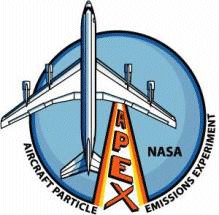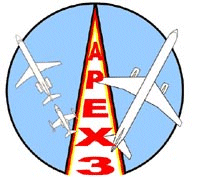 |
 |

| Home | Meet the Team | In The News | Aeronautics Research | Atmospheric Research | Instruments | Publications | Data |
|
||||||||||

|
||||||||||
| ||||||||||
|
Aircraft Particle Emissions Experiment Series NASA has been studying various types of emissions from commercial aircraft to develop ways to reduce emissions and protect the environment. In recent years, fine particle emissions from aircraft have been identified as possible contributors to global climate changes and to lowering local air quality. These emissions are produced when a hydrocarbon fuel (such as modern jet fuel, which is primarily kerosene) does not burn completely. Incomplete combustion often occurs at the lower power settings used for aircraft descent, idling and taxiing. This produces fine carbon particles, or soot, as well as particles of nonvolatile organic compounds. The LARGE group studied emissions from the NASA-DC (CFM56 engines) in a series of three-APEX tests:



Related Publications:
Wey et al, Journal of Propulsion and Power 07 - studying emissions from the NASA DC-8 (CFM56 engines),
http://arc.aiaa.org/doi/abs/10.2514/1.26406
|

|
Page Curator: Jay Madigan NASA Official: Bruce Anderson Page Last Modified: |
|
+ NASA Communications Policy + Freedom of Information Act + Budgets, Strategic Plans and Accountability Reports + Inspector General Hotline + Accessibility at NASA |
|
+ USA.gov + Open Government at NASA + Privacy Policy and Important Notices + Multimedia Browser Plug-ins |